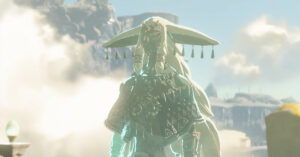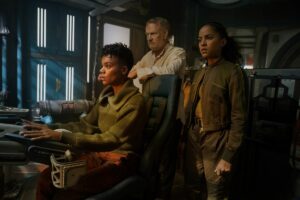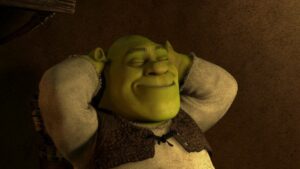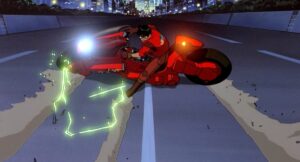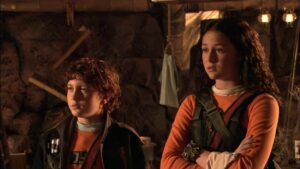It is a truth universally acknowledged that superheroes are not allowed to kill people, whereas everybody in Mortal Kombat kills people, like, all the time. And yet, the two groups did meet in 2008’s Mortal Kombat vs. DC Universe, a game that was generally regarded to be … fine. People thought it was fine.
More interesting than the game was that superhero vs. Mortal Kombat dichotomy. How do you marry Mortal Kombat’s dedication to igniting parental pearl clutching with the most universal genre convention in superherodom?
That question cuts to the fundamental difficulties of making video games with superheroes in them, and the limits of how far the superheroic no kill rule can be stretched before it simply snaps.
Announcer voice: Non-fatality
Mortal Kombat vs. DC Universe was a compromise that nobody liked. In order to meet the approval of DC Comics, Midway Games agreed to tone down the franchise’s traditional hyperviolence to something that would garner no more than a “Teen” rating from the ESRB. No spines were ripped out in the making of this production.
And yet, characters could still “die.” Of the 10 DC Comics characters who are playable in the game, four are villains, and therefore were fine to get their own “Fatality” moves (including Catwoman, who’s really more a thief than a killer, though that is perhaps splitting whiskers). That left six playable characters forbidden from taking a life. They had to be represented in a way that jibed with the cross-media needs of DC Comics, but they still needed multiple punishing finisher moves in order to fit the conventions of Mortal Kombat.
The solution was something called a “heroic brutality,” a phrase that is horrifying if you think about it for even a second.
Some examples of heroic brutalities
Superman non-fatally hits a man on the top of his head repeatedly until he is hammered into the ground ...non-fatally. Wonder Woman uses her lasso to non-fatally slam a person into the ground on their head. Green Lantern’s opponent’s pelvis gets smashed between two ten foot hammers.
Captain Marvel/Shazam fire-punches his opponent, then hits them with magic lightning, then stomps on them from such a great height that they are buried in the ground. (This is all one heroic brutality.) Alternatively, Shazam just picks someone up and flings them headfirst at the ground so hard they are buried up to their pelvis, non-fatally. To be clear, Billy Batson is, like, 12.
The heroic brutality that seems both brutal and sufficiently nonlethal is one of Batman’s. He seems to just cover a person in a swarm of bats. As long as the animals aren’t diseased, his opponent should be fine with some Neosporin. Maybe a rabies shot to be safe.
Almost all of the heroic brutalities make sure to show the opponent’s limbs dazedly moving around at the end of the cutscene, as if to say “I sure hope someone comes along and releases me from this stone tomb into which I was smashed, like a nail into a two by four.” This calls to mind how every Saturday morning action cartoon series got away with nonlethal superheroes. Enemies can get caught in explosions, slugged until they drop, or thrown out of airplanes — but the viewer better see them wiggling to get up, groaning to show they’re barely conscious, or see the poof of a parachute.
The problem is that with any kind of genre convention, a lampshade can only do so much. If you told me you read descriptions of these “heroic brutalities” and didn’t chuckle, I’d call you a liar. That’s because they’re not the nonlethal battles of superhero comics.
They’re completely Looney Tunes.
Is this Mortal Kombat’s fault?
This is a pattern with a lot of video game superheroes — game makers tend to pay lip service to non-lethality, and then stretch that definition to an inevitable breaking point.
Superhero video games still seem to struggle with how to marry an ironclad genre convention of limiting how a character uses their power, with a medium where the biggest titles still predominantly revolve around the mechanics of killing bad dudes.
Yes, it’s MK’s fault
There is one big difference between Mortal Kombat vs. DC Universe and games like Spider-Man or the Batman: Arkham series, however. The latter two are open-world games, where the player has to feel like they can do dope shit, no matter where they are in the game maker’s carefully crafted playground. But the more powerful toys you give the player within that playground, the sillier the mechanical and narrative restrictions start to get, and eventually Batman is driving a tank through a crowd of people at highway speeds. But it’s actually fine, because he’s electrocuting them first.
Meanwhile, heroic brutalities are cutscenes! A player’s agency doesn’t enter into the equation at all. Midway had full control over how DC superheroes took down their opponents in Mortal Kombat vs. DC Universe.
And Superman still encases a person in a block of ice, flies them up into the air, and releases them to smash into the ground. Then he elbow drops them.
Vox Media has affiliate partnerships. These do not influence editorial content, though Vox Media may earn commissions for products purchased via affiliate links. For more information, see our ethics policy.
- Action
- Affiliate
- Airplanes
- animals
- around
- Biggest
- call
- cartoon
- caught
- content
- Conventions
- data
- dc
- DID
- driving
- Drop
- Editorial
- Entertainment
- fine
- First
- fit
- full
- game
- Games
- gif
- great
- Green
- head
- How
- How To
- HTTPS
- ICE
- image
- Including
- influence
- information
- IT
- Kills
- large
- lightning
- Long
- Making
- man
- Media
- medium
- moves
- Movies
- network
- order
- partnerships
- Pattern
- Pay
- People
- player
- power
- Production
- Products
- PS5
- Publishing
- Releases
- safe
- Series
- SIX
- So
- start
- superhero
- superheroes
- Swarm
- time
- top
- Universal
- Video
- video games
- Voice
- vox media
- WHO
- within
- woman



